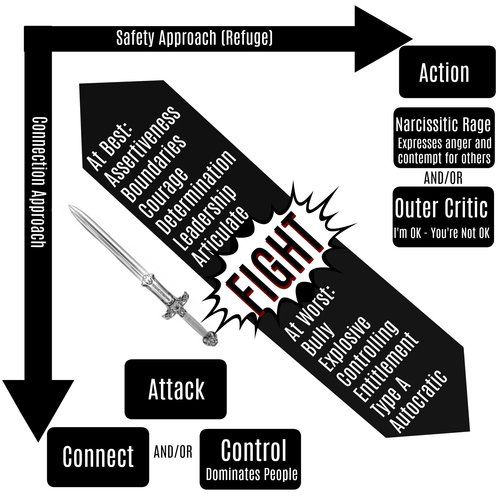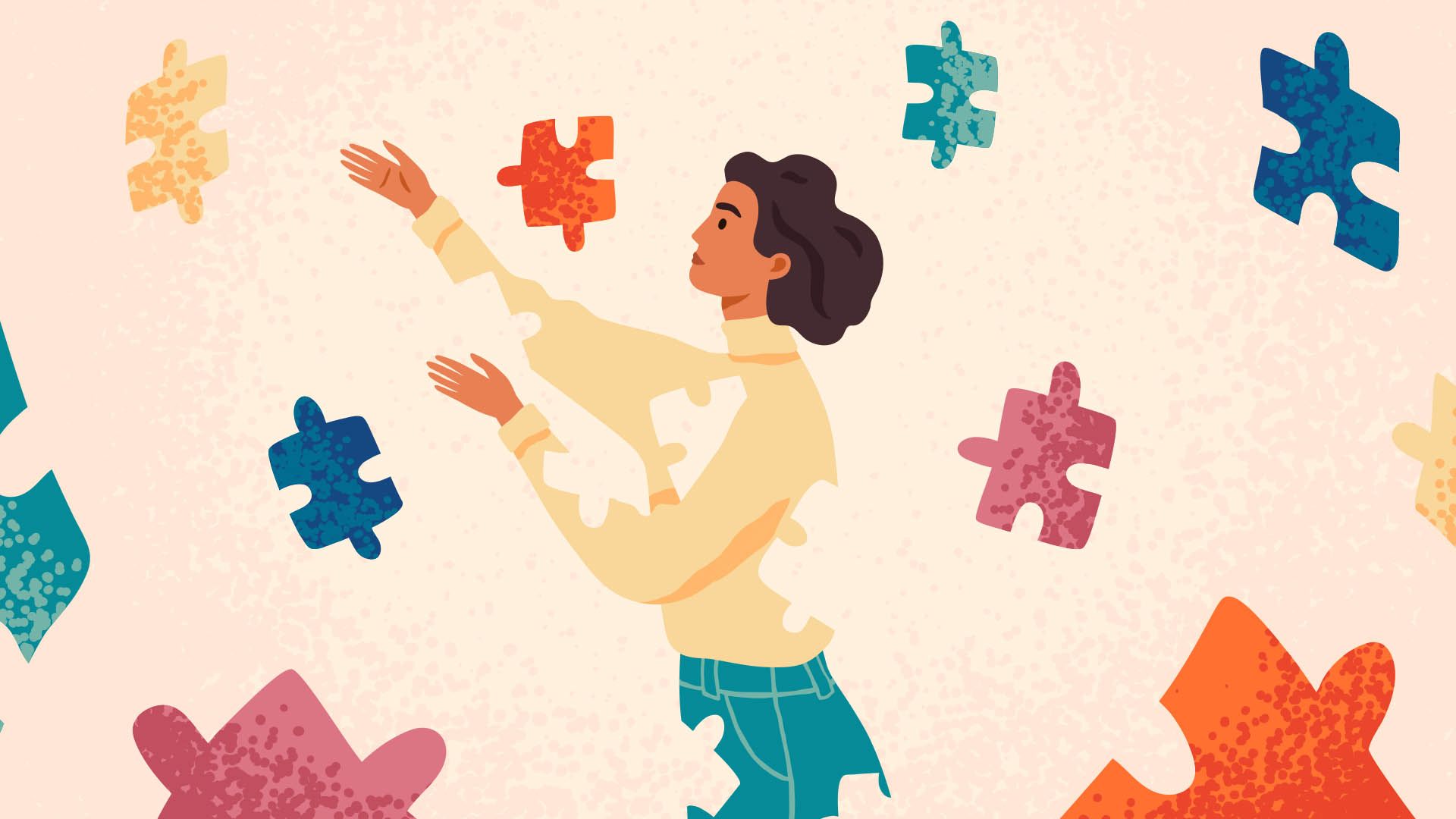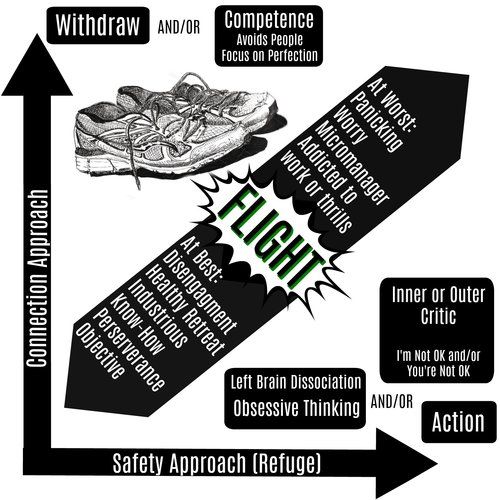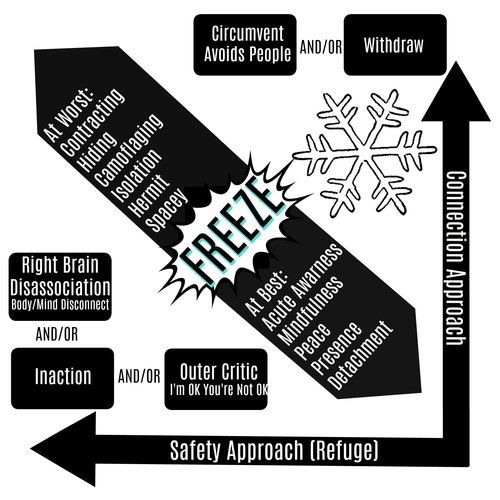Part 1: Introduction
What is an emotional flashback?
Firstly it is probably worth drawing the distinction between an “emotional flashback” and the concept of “flashback” people are most familiar with.
A flashback as it is normally used is a psychological phenomenon where a past experience is mentally re-lived in the present moment. It usually infers that it is re-lived vividly and dramatically and that the experience is invasive and upsetting.
Hijacked
It can be used to describe a vivid, unusual and/or traumatic experience. Psychedelic drugs can leave the user with persistent “flashbacks” to the hallucinogenic perceptual state which can be disorientating. Violent trauma can leave the victim with experiences of “flashbacks” to the moment the trauma was experienced.
At its most benign manifestation it could also be just a very strong pleasant memory. The point is that it is usually experienced as immersive and intense. This is a flashback as it is normally used.
This type of flashback is often initiated by external, identifiable “triggers” in the environment. An object, colour, person, situation, smell, feeling or sensation. Standard PTSD flashbacks come with identifiable Visual, Auditory, Kinaesthetic triggers and the “flashback/memory” will be of an EXTERNAL event which is encoded and replayed, like all memories as a visual, auditory, kinaesthetic experience with concurrent emotions.
“Emotional Flashbacks”, simply put, have exactly the same root mechanism as “Standard Flashbacks” but they are caused by and manifest in different ways. Instead of “flashing back” to the intensely traumatic or intensely pleasant event in which the conscious mind “relives” the rollercoaster ride of sound, visuals, sensations and emotions, the mind and body “flash back” only to the emotions of the initial trauma.
In CPTSD the “memory” of the Emotional Flashback is therefore not identifiably visual, auditory or kinaesthetic but is only encoded as the emotions experienced at the point of the initial traumatic experiences. Not once but over and over again.
At this point we should point out that the flashbacks are created in two different and important ways too. Bear in mind that this is an oversimplification given only for ease of understanding and that, of course, the two types of flashbacks can and ALWAYS do overlap.
There is no PTSD without CPTSD and no CPTSD without PTSD.
When researchers are bewildered by the fact that some combat veterans can overcome PTSD faster than others, I would suggest that those struggling to recover have severe CPTSD as well as PTSD which needs to be treated in a different way.
CPTSD is created by ongoing invisible traumas resulting from emotional abuse in a setting where the target cannot escape. Because there is not just ONE singular, traumatic external event, there is no visual, auditory, kinaesthetic input to be recalled in the flashback. So the flashbacks become purely emotional. They are only of how the traumatic experiences made the individual FEEL at the time of the inescapable trauma.
This is uniquely bewildering and confusing to the person experiencing CPTSD because they will not remember and will not know why they are suddenly overwhelmed by feelings of terror, guilt, shame, depression.
Naturally, without further information they fall prey to blaming themselves and concluding “there must just be something wrong with me”. This has a deleterious effect on the personality, as does PTSD (especially in those cases where the PTSD seems untreatable i.e. when it is CPTSD) but at least with PTSD the client can say: "this is why I am the way I am, I went through this identifiable singular event and now I am struggling to process the trauma and pain of it.”
PTSD is usually a singular (or series of singular) memorable external event(s) like a violent assault that create a flashback in which one can remember the visual and auditory input of the memory. Again: this is an oversimplification but this is a complex subject we need reductive models to guide us through the mire.
PTSD
CPTSD
Emotional flashbacks typically occur as one of the major symptoms in people with (Complex) Post Traumatic Stress Disorder (CPTSD/PTSD).
Research has shown that even though one may not remember a specific traumatic event, there might be an unconscious memory of what happened. This memory is stored differently in the brain, compared to other types of experiences in an individual’s life. Instead of being stored, like most memories as a “video clip” with sound, feelings and movement of external events the individual can remember with certain coinciding emotions it is ONLY stored as the raw emotion.
There can even be the case that a person doesn’t think that on a conscious level that a situation upset them, but they still have the memory stored as emotional flashback in the unconscious. Traumatic experiences are, naturally, more related to situations where there is a lack of predictability and control.
It is possible to think that a memory or time of your life or situation you have lived was entirely “ph neutral” for you at the conscious level and to be deeply in denial about how emotionally traumatic it was for you simply because you couldn’t contextualise the emotions you felt, they didn’t match your self-image and so you simply shut them down.
What emotional flashbacks are NOT:
Emotional flashbacks are NOT the experiencing of LEGITMATE and appropriate negative emotions when you are in a situation where abuse, assault, violence or the subtle breaking of boundaries is actually present and you feel badly about it. That is a legitimate, proportionate, non-neurotic response. An emotional flashback is when we experience intense negative emotions that have little relation to external reality, when there is no external trigger or when there is an external trigger but we react disproportionately to it.
Emotional flashbacks will I hope NOT become the new faddish psycho-babbly hipsterish self- absolvement method “du jour”. Too many people are dipping their dirty fingers unjustifiably into the victim jar to steal the cookies of empathy, whilst loudly proclaiming that anything in the environment that doesn’t match their exacting world view is “a trigger” and a “violation of a safe space” and that everyone not conforming to their specific needs is an abuser. This is nonsense and a spurious hijacking of a very serious mental health issue.
Going through the world bullying people by being the biggest victim in the room is not cool, please don’t keep people in your life who adopt this strategy. Over a long enough timeline they will exhaust, embarrass and exasperate you utterly.
To the important question:
Can emotional flashbacks be stopped?
They can, but it takes time and consistent, diligent effort.
Life with emotional flashbacks can become a living hell. Life free from emotional flashbacks is vastly better: pleasant times are more pleasant, unpleasant times are easier to manage and a lot shorter. Life really can be a lot more fun.
How?
The essence of stopping emotional flashbacks comes down to 4 simple things:
- Emotional flashbacks can be stopped by becoming aware of and monitoring your emotional and physical state. Awareness, the first step, is absolutely key.
- Emotional flashbacks can be stopped by taking control of your emotional, psychological and physical state on a daily basis. You have a “state” and to a degree, you can control it.
- Emotional flashbacks can be stopped through increasing your understanding of how and why and when they manifest.
- Emotional flashbacks can be stopped by developing techniques to “pattern interrupt” and deconstruct and tackle them and developing the mental muscle to apply those techniques with consistency.
Everyone loves a story, it puts you into a “low pressure” relaxed state in which you open up to learning new things just like when you were a child. At such a young age, your brain plasticity was at its highest and learning was the easiest and most exciting thing in the world.
The metaphors hidden in stories accesses parts of the unconscious mind that can readily relate to and creatively engage with complex ideas in a way that makes them seem manageable and fun. Climb on board this metaphor for a minute. See if you like it.
Imagine you are flying a space craft, like Star Trek or Star Wars. You can have Spock or Han Solo, it’s up to you.
Just please don’t mix them. This has nothing to do with psychology and everything to do with good sci fi etiquette.
You are flying through space and you are the captain of that vessel. You have an objective, a map of how to get there, a flight deck with dials and buttons and levers and flashing lights and important looking readouts that tell you your distance to destination, attitude, altitude, oxygen levels, fuel, laser-beam and shield power and all that useful stuff.
This is the flight deck for your space craft. Imagine you are the captain of your own life and your own body in the same way right now: What is your current destination? What is your mission today? How are your fuel levels? Do you need to dock and re supply? Do you need to upload new maps to the navigation machine?
What do you need to do to keep “flying smoothly”? What can you be doing to help yourself to keep avoiding turbulence, asteroid belts, Klingons or Darth Vader’s minions? Does a good Captain just fly blindly with no destination and ignore the feedback from his vessel? No he does not.
Does she fail to check fuel and oxygen levels and stress damage and repairs needed to the vessel? Well if she does, what is going to happen to her spacecraft?
The flight control panel is where you go inside of yourself to figure out where you are up to, where you are going and what you need right now.
Go inside now and check the flight deck. How do you feel? Do you need something? Is there something you could be doing for yourself to make your life easier? To make the experience of being alive a little more enjoyable?
Getting used to “checking in to the flight deck” is your foothold to getting to grips with controlling the beast that is the emotional flashback.
Emotional flashbacks are learned survival responses that pop up in response to STRESS.
Emotional flashbacks are therefore more frequent and powerful in stressful conditions. At the risk of stating the obvious: for a person seeking to heal from CPTSD you really must make avoiding stress a priority.
Avoidance of stress will help the avoidance of emotional flashbacks.
Not giving thought to your stress levels is like inviting Emotional Flashbacks to come in the front door with their muddy boots on and to drink milk straight out of the carton whilst eating your last chocolate cookies. Not cool.
Now, yes, emotional flashbacks are involuntary – but, that doesn’t mean there is nothing you can do to avoid them or that once they start you are at their mercy. Not at all.
In terms of purely avoiding flashbacks there is a significantly higher risk of getting into an emotional flashback if you are not in control of your state and not aware of how your environment may be putting strain on you and subtly wearing you out.
What does it mean to be “in control of my state”?
The skill of state management is nothing more than being a good ship’s Captain. Don’t let your fuel levels sink too low, don’t fly into unchartered territory, don’t get trapped by a Death Star tractor Beam and don’t do dodgy trade deals with Jabba the Hutt.
You want to do all you can to keep yourself “in a good state” in order to avoid emotional flashbacks altogether and to be able when they do come to shrug them off more quickly.
The more capable you are of controlling your state the easier it is to control flashbacks. And the less of a target you will be for narcissistic psychopathic cluster B types. Yes, they target people who are frequently in negative/weak states.
Just watch: they get very stressed, depressed or furious to the point of violence when a target starts regaining control of their emotional state and expressing happiness, joy and decisiveness. Why does this focus on effective state management work to reduce the frequency and intensity of emotional flashbacks?
Many emotions are conditioned responses that are processed faster than you are able to realise. Through life we have learnt to associate certain cues in the environment with certain feelings, it happens almost in an instant. An example is the warm and happy feeling you get when you hear that someone you care for is coming home, or how some people instantly feel repelled when they see a spider. In these situations, the stimulated feelings inhabit your body and mind before you even would have the time to become aware of the sound of the key against the door or the spider appearing in your field of view.
So, becoming aware of which situations evoke certain emotions gives us an opportunity to take control of them before they develop. You don’t have to be at the mercy of unconscious, conditioned emotional responses.
And if you are, your life will suck.
If you learn to shun going from one subjective, knee jerk emotion based, subjectively preferred decision to the next in favour of the honourable discipline of being rational, objective and making choices based less on feelings and more on good information your life will suck an awful lot less.
Remember to practice the following advice and techniques on a daily basis, so that it with time becomes a habit. At this moment in time, most of your emotional flashbacks will have stopped.
Part 2 - Taking Control of How You Feel
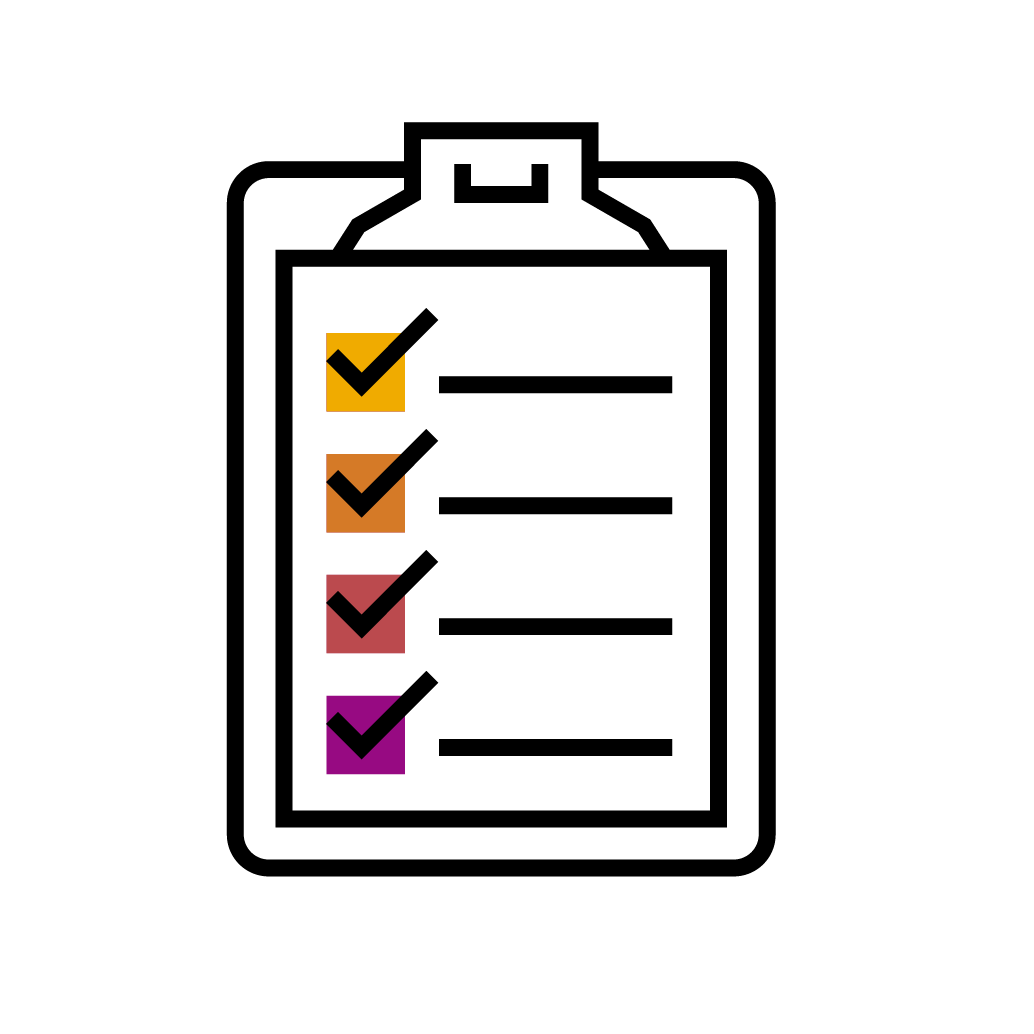
The following is a check list for basic physiological needs that should be fulfilled every day. This is not fancy psychology and some people make the mistake of thinking this is boring.
Ok, it’s not exotic or entertaining but listen: IT WORKS. So please just do it. All the time. Every day. Your life is guaranteed to improve if you do.
To check these points daily will do two things. It will make you become aware of yourself and perhaps the cause of an emotional flashback, it will also make you more vigilant about your emotional and psychological state. Remember, you are the pilot of this plane, and this is how you can control your state.
REMEMBER:
This is more a checklist of good practise. For keeping the spacecraft in good order and “ship shape”. Cover all the basics before looking for the funky “hacks”.
Daily Checklist
Diet
Sleep
Medication
Stress
Exercise and activity level
Intimate relationships
Music
TV, massage, bath, painting, video games, journaling etc.
The 4 Pillars of State Management
The following are four state management techniques that will help you not only get out of a dark and heavy state, but that will get you into a healthy and balanced state. These 4 techniques are for creating change immediately in the present moment.
To make it easy to remember we will call these four techniques the four legs of the poodle “Fifi”. FIFI is a precious little thing. If you give her everything you need you will feel super-duper.
F
FOCUS
I
INTERNAL
REPRESENTATIONS
F
FIZZY
PHYSIOLOGY
I
INTERNAL
DIALOGUE
FOCUS
You control your focus by controlling what questions you are asking yourself in your inner dialogue.
If you would like to be in a cheerful state you would say: “What can I focus on now that would make feel good and optimistic? What am I happy about in life? What do I look forward to?”
INTERNAL REPRESENTATIONS
What videos are running inside of your mind? Can you change this video and play a different one? This might actually change the way you feel about something.
The art and science of altering internal representations is very much a focus of NLP. It has been found that not just changing WHAT you think about but changing HOW you think about it has an enormous impact on your brains interpretation of it and how this then impacts your state.
Even to the point of being able to cure long term phobias just focussing on this one technique alone. Experiment: think of something you like doing that makes you feel good.
Think of it as though you are doing it in the first person, then the second person watching it. Which one gives you the best feeling? Which one gives you the strongest feeling? Does it have a soundtrack to it? Can you feel better about this good thing by making the soundtrack louder?
By changing the direction of the sound, or making it closer or further away or even just adding a soundtrack? If you had to add a soundtrack which song would make this thing feel even better when you think about it?
When you feel good about this thing can you strengthen that feeling? Can you double the feeling? Where does it start? Where does it go? Does it have a colour? Can you move it around faster? In more places? Can you intensify or change the colour to make it feel even better? These are all ways in which we can play with our internal representations in such a way as to change the way we feel and alter/ control our state.
FIZZY PHYSIOLOGY
Right now. Take a deep breath in. Straighten your back. Lift your arms over head. Shake your hands. Make a farting noise with your mouth. Kick your feet. Breathe ALL the way out loudly, clap 3 times. Make glasses with your fingers and put them over your eyes.
Say the weirdest word you know in a foreign language. Say it backwards and try to sound like Sean Connery.
Look at the other people on the train. Tell them not to call the police it’s just a book you are reading. Its psychology. No really it is. Smiling, breathing, moving all change your state within an instant.
Relax the muscles around your eyes, slacken your jaw, rest your tongue on the roof of your mouth and look with just your eyeballs upward. Roll your eyes left to right 10 times.
You will feel differently than you did before you tried it. As you get up from reading this, stand up tall and be as regal as you can when you move, when you speak, speak a little more slowly and loudly. Make more eye contact and smile. See how it makes you feel. Then try being quiet and speaking quickly whilst fidgeting with your fingers. See how that makes you feel. Experiment. It’s your body and it’s your brain, you can do what you like.
Take control of your breathing, gestures, facial expressions, your posture and the volume and tone of your voice. This gives you immediate access to your emotional and psychological state.
INTERNAL DIALOGUE
You are talking to yourself inside your head all the time. Your brain is has a river of consciousness running through it all day long and the river is made up of words. That you are thinking in. Now. And now. Notice how thinking seems to be a process of question answer? Is it? Why yes it is!
If you can control the words you are saying to yourself you can control your state.
Affirmations can change the way that you talk to yourself. An example is:
“I am learning to change my emotional state” and “I am learning to manage my emotional flashbacks”
“I can choose to feel a bit more cheerful now if I like.”
“It’s rather jolly good fun to play around with feeling good isn’t it? Crikey so it is!!”
“It might actually be a bit of a laugh and some fun to get a handle on this emotional flashback thing. Wouldn’t that be nice?”
Yes it would. So have an experiment with this. It will improve every area of your life.
“The quality of your life is a direct reflection of the quality of your communication with yourself and with others”
Part 3 - Knowing When Storms Are Ahead

Flying the spaceship. At times as you are flying this spaceship in the upper atmosphere of some alien planet, there will be turbulence due to solar winds and it will seem as if these storms are coming from nowhere. That is not true however.
It only SEEMS as though the storms come from nowhere. But if you get into the fun daily thing of just checking your data properly, your senses, the indicators, your dials, your fuel levels and seeing what you need you will see that they do NOT come from nowhere. Very often you can catch yourself way before a full force flashback storm develops.
Check the attitude, how are you doing from moment to moment in relation to reality? Follow the rest of the checklist. Are you fed, watered, exercised and slept properly? Check. What are we focusing on? What is our inner dialogue saying? What is our body language doing? Are we spiralling up into cheerful stoicism or down into the doomfulness?
Over time you will learn the subtle cues and indicators that turbulence is coming and you can do something about it.
Sit down and stare at the wall and drink some fluids. Read maybe? Listen to a song. Excuse yourself from a situation. Often times a “pattern interrupt” and short break is enough for us to get back in touch with ourselves and what is going on at the internal level.
Becoming good at detecting these subtle cues that a flashback is coming, is equally important as managing the emotional flashback itself. The best thing that you can do before you learn how to manage an emotional flashback, is to learn that you need to communicate more effectively with yourself about this issue. Be a good friend to yourself.
It’s nice to be friendly. When a friend visits, don’t you say “what do you need? Fluid? Calories? Cookie? What?” and then put the nice thing in their face?
Part 4 - During An Emotional Flashback
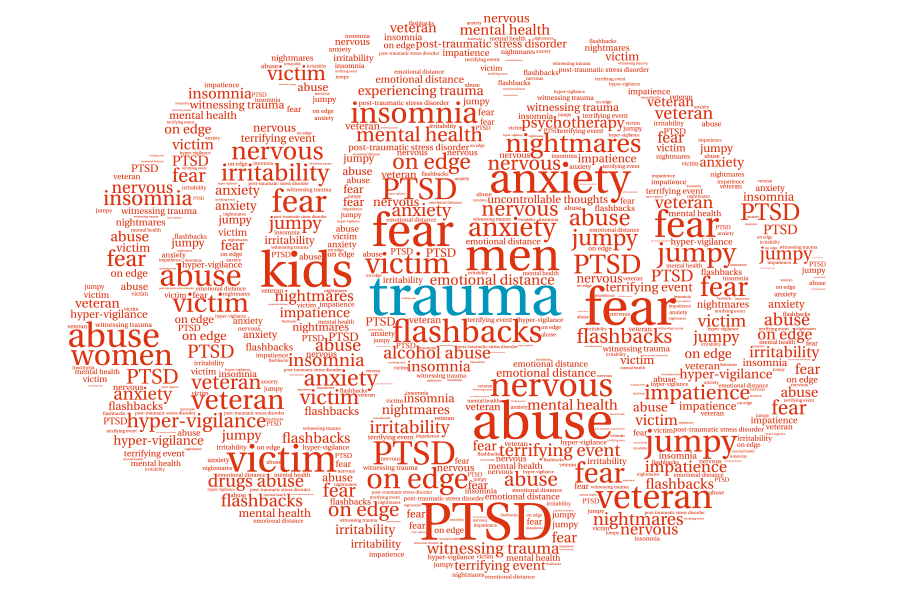
If you still find yourself in an emotional flashback, the single most important weapon that you can use is your capacity to distinguish between you, your personality, who you really are and the emotional flashback and who you temporarily seem to become when in that flashback. You need to have the ability and the awareness to say “this is not me”.
As Eckhart Tolle says of his concept of the Pain Body, which seems to be similar, the problem is that when it rises up it has a magnetic energy. You will feel drawn into it. You will probably not at first feel like saying “no this is not me”. Because you have become identified with it. And perhaps the people closest to you now identify you with it and confirm the illusion.
You are not the emotional flashback.
“I AM IN AN EMOTIONAL FLASHBACK”
As most people are not aware that they are stuck in an emotional flashback, this point becomes crucial in making it stop. In this way you are acknowledging two things:
- This is not you. You are not pH neutral at this scenario.
- It makes it possible for you to acknowledge to yourself that this is something that you can fix.
If you are in a situation where you are experiencing an emotional flashback, if possible – LEAVE.
If in midst of emotional flashback where, for whatever reason, you simply cannot leave, you will need to talk yourself through it. You need to be able to say to yourself:
“I am in an altered state of consciousness now, I should take less action. And I should say less. My animal, reptilian instinct is going to be pushing me to take massive action and to say more. But I have to fight that, because I am now going into a flight/fight response. So I must now be very self- disciplined and hold my impulses down and breathe.”
WAIT
You have to learn to wait. Don’t send that text or make that phone call. Not yet. Just wait. Wait 5 hours. Sleep on it. Wait 2 days.
Then see how you feel.
JOURNALING
To truly be able to overcome emotional flashbacks, you will need to study yourself diligently and take the traumatic responses seriously. The ideal scenario would be to do this with an experienced, well-grounded therapist who specialises in CPTSD but they are unfortunately as rare as unicorn farts.
In the absence of a good therapist then you can always journal. This is a great practise in becoming aware of your emotional needs.
Emotional flashbacks are always somewhat rooted in the denial of our own emotional needs and the avoidance of legitimate pain, grief and sorrow. It will help if you can learn to be able to honour your own experience enough to actually sit down, think, write, process and gather the necessary data that you need to overcome the flashbacks.
Subject the incident to a little forensic analysis: Where? When? With whom did the flashback occur? And how does that emotional flashback manifest?
TRAUMA RESPONSES
What is your trauma response?
The FIGHT type:
- If you as a child were allowed to imitate the bullying of a narcissistic parent, or if you were raised in a very unboundaried or spoiled home, you may develop this defence response. Many fight types are the “older sibling” that was over-powered, just like their parents over-powered them.
- When feeling abandoned – you tend to respond with anger.
- You may be in a relationship with a “captured” freeze or fawn type as a slave, on a dominance- submission basis. This often results in self-annihilation for the submissive partner, which does not realise and is in denial about the meanness of the fight type bully. This can cause PTSD in their partners, and if it goes on for long enough Complex PTSD.
- A fight type may be very charming and helpful at times and uses this as an attempt to control others.
- Fight types may be admired and seen as great by many, but it is difficult for their spouses or children as no one can validate the abuse that the fight type puts them through.
- Fight types who tend to rage use other people as dumping grounds for their anger, and are addicted to the emotional release they get in this way.
Healing:
Extreme fight types who consider that they do not have any healing to do, or that are almost perfectly balanced as individuals – can sadly not help themselves.
But if you truly consider that you have some recovery to do, then there is a way for you to recover. Due to your busy and over-thinking lifestyle, you will have to actively assign time to do some self- examination.
Understand this: You are denying and minimizing the way that you behave. Behaving in the way that you do comes at a cost. You are scaring away your intimates. You will not be able to develop any trust in your relationship, if you continue like this. If you are in a relationship, your partner may be staying with you out of fear and resentfulness. It will be hard for them to give you the warmth and care what you always have so desperately desired. They too often feel disgust and anger coming from you.
How: You need to convert your anger into tears. The anger comes from abandonment feelings, so learn to express your fear and shame in a healthy way. When you grieve your past, your anger will settle.
Be open about the illusion that you have for your own perfection and do not project and expect it from others.
Learn to take time-outs when you are feeling triggered and when the anger is creeping up. It may be the right time to grieve the abandonment sadness, rather than destructively displacing it onto your intimates.
Especially focus on developing your empathy and consideration for your intimates. How does it feel to be the person that you are interacting with?
In the start you may have to fake it until you make it. The long-term goal is to learn to feel more compassionate to the people you care for.
The FLIGHT type
- By always keeping busy you try to flee from the inner pain of abandonment
- Individuals who rush to achieve
- As a child you were quite hyperactive, either by being a driven student or by being a drop out.
- Flight types tend to have a different type of dissociation compared to the freeze type. It is called a “left-brain dissociation” and it means that you tend to use -constant thinking- to distract yourself from feeling. You tend to over-worry and be one step ahead, thinking everything through.
- Prone to becoming addicted to adrenaline
- Can become stuck in the head by overthinking and analysing everything.
Healing:
You may have difficulties to see the forest from the trees. You have to start moving into your feelings.
Understand: When you try to keep everything perfect, it is coming at a cost. If you are a work addict, becoming aware of it without changing your lifestyle will not help you.
How: Cultivate a “neutral” speed for engaging in life. You need to relax and decrease the habit of “accomplishing.”
If you wish to help yourself, you will actively need to take time outs from your busyness to look within yourself.
Crying is a good tool for shrinking the compulsive and obsessive behaviour. Also, get into a habit of practicing short meditations where you get yourself to feel your body and relaxing the major muscle groups.
During an emotional flashback: You probably turn into a headless chicken. Stop. Take a moment to ground yourself and reprioritise. Ask yourself – what is the most important thing right now?
The FREEZE type
- As a child you were probably the scapegoat and were not allowed to fight, flee or fawn.
- Individuals who get frozen in retreat mode
- Spends time hiding, isolating and avoiding human contact
- Have a deep unconscious belief that people and danger are synonymous.
- Spends a lot of time dissociated and detached from reality, through daydreaming, sleep, wishing etc.
- Can become addicted to the opioids that dissociation creates.
- In extreme cases these individuals give up on possibility of love
- To others, these individuals can appear to have an attention deficit disorder, as they have the capacity to changing the “inner channel” whenever the inner experience becomes too uncomfortable.
- Tend to project their perfectionistic demands onto others rather than onto themselves.
Right brain dissociation is a common activity in freeze types. The opioids that are released during dissociation come as an animalistic defence mechanism due to the belief that danger and death is imminent, it is a collapse response, which means extreme abandonment of consciousness.
Continuous numbing out and dissociation can lead into depression.
Healing:
Similarly to fight types, freeze types can be reluctant to understanding any childhood trauma. Many individuals are in denial of that they actually are in emotional pain.
Understand: Understand the life narrowing consequences of your behaviour, all people are not dangerous and everyone needs some intimate relationships. You are strong enough to face the reality.
How: You need to gradually build trust with people, and understand that you do need to grieve. Freeze types benefit with working on their anger which can help to awaken their dormant will and drive.
The FAWN type
- Behave as if the price of admission to any relationship is the abandoning of all their needs, rights, preferences and boundaries.
- As a child you learnt that you may gain safety and care by becoming a helpful and compliant servant. Usually has at least one narcissistic parent.
- As a child, you were parentified (forced to be a “parent” rather than permitted to be a child). The roles were exchanged so that you took care of the needs of your parents.
- Drawn to narcissistic / fight types
- Over-listening to others
- Problems to say no
- Merges with the needs of others
- Core of many codependents behaviours
- Can invoke others to narcissistically monologue by themselves.
Healing:
Of all four trauma responses, the fawn type is most developmentally arrested in their healthy sense of self. However, when gained some psychoeducation- they are the most open and relieved about it.
Understand: The fear of being attacked for lapses in integration causes you to lose your boundaries, rights and needs. Try to write down some key words for yourself to use when in a situation with someone else, that will remind you to not be afraid of expressing yourself, and actually taking part in a dialogue with others.
How: You have to broaden your verbal and emotional self-expression and avoid over-listening to others. Also, learn about your parent’s role in creating your fawn response.
Grieve the loss and pain of being without healthy self-interest and protection for so long. Also to find your sense of self, work on your anger to rebuild a healthy fight response and self-protection. You need to practice equality, assertiveness and courage.
HAND MNEMONIC
Use this exercise throughout the day.
Hold on to your thumb and remember that you are the king or queen of your own emotional, psychological and physical state, that you need to be able to ask yourself if you are in an emotional flashback and acknowledge that you do occasionally have them.
- Grab hold of your fore finger, remember that sometimes you need to point out when your inner critic is active. When the mean inner voice is acting up, point at it and say “this is what is happening, this is not me this is the inner critic”.
- The middle finger goes up, to say “no, I am not going to do that”, it is safe and ok to say “no” and to smile at the same time, not every no has to be a drama.
- The ring finger is your relationship with yourself. “How am I relating to myself right now? What is my inner dialogue saying? What could I be saying to myself that could be nurturing that could be compassionate, that could help me to deal with this situation?”
- Grab hold of your little finger and remember that you have something called an “emotional barometer”. “How does this make me feel?” “How does this person and situation make me feel? What is going on for me in this moment in time?”
Hand Mnemonic Video Instruction
Conclusion and Hopefulness for Full Recovery
If you suffer from emotional flashbacks, it indicates that you have been through traumatic events in your past, where you in one way or another, did not have the power to take care of your needs. The flashbacks act like a warning system for not letting hurtful situations from the past repeat. By practicing self-care and fulfilling your needs and goals, you will gain the unconscious trust in yourself again, to know that whatever happens - you will be safe. And in that place of safety you will heal.






